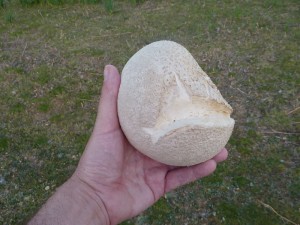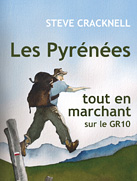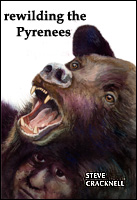Walking in the hills above Zubieta, in Navarra I come across some immense globular mushrooms. They look like giant puffballs to me. Fresh, puffballs have a wonderfully earthy smell. Cooked, they have a nutty flavour and a texture rather like aubergines. In principle puffballs are easy to recognise – no stem and no gills.
Just to be safe, I stop a passing tractor. “I don’t know what they are called but, no, they are not edible,” I am told. At a nearby farm I ask again. “It’s a Bejin de puta – tart’s mushroom. No good.” says the woman, but her father is more circumspect. “You may be able to eat it. I wouldn’t!”
But the more I search on the internet, the more I am convinced that my specimen is indeed an edible puffball. I find various names for it in Spanish (Bejín, Pedo de lobo, Cuesco de lobo), Euskera (Astaputz erraldoi) and French (Vesse de loup). I also discover that Pedo de lobo, Cuesco de lobo, Vesse de loup and even the scientific name for the species Lycoperdon all mean wolf’s fart. Astaputz erraldoi means an enormously vulgar farting person. Why? Because the mushroom propagates by exploding, releasing a cloud of brown spores into the air.
At that stage the puffball is indeed inedible but when young it is delicious, yet nobody eats them. Well, would you eat something called a “wolf’s fart”?
Beware: it seems that small puffballs have been confused with immature specimens of the deadly amanite phalloïde [see wikipedia for good pictures] but this one was definitely mature. It weighed 435g.










Footprints on the mountains